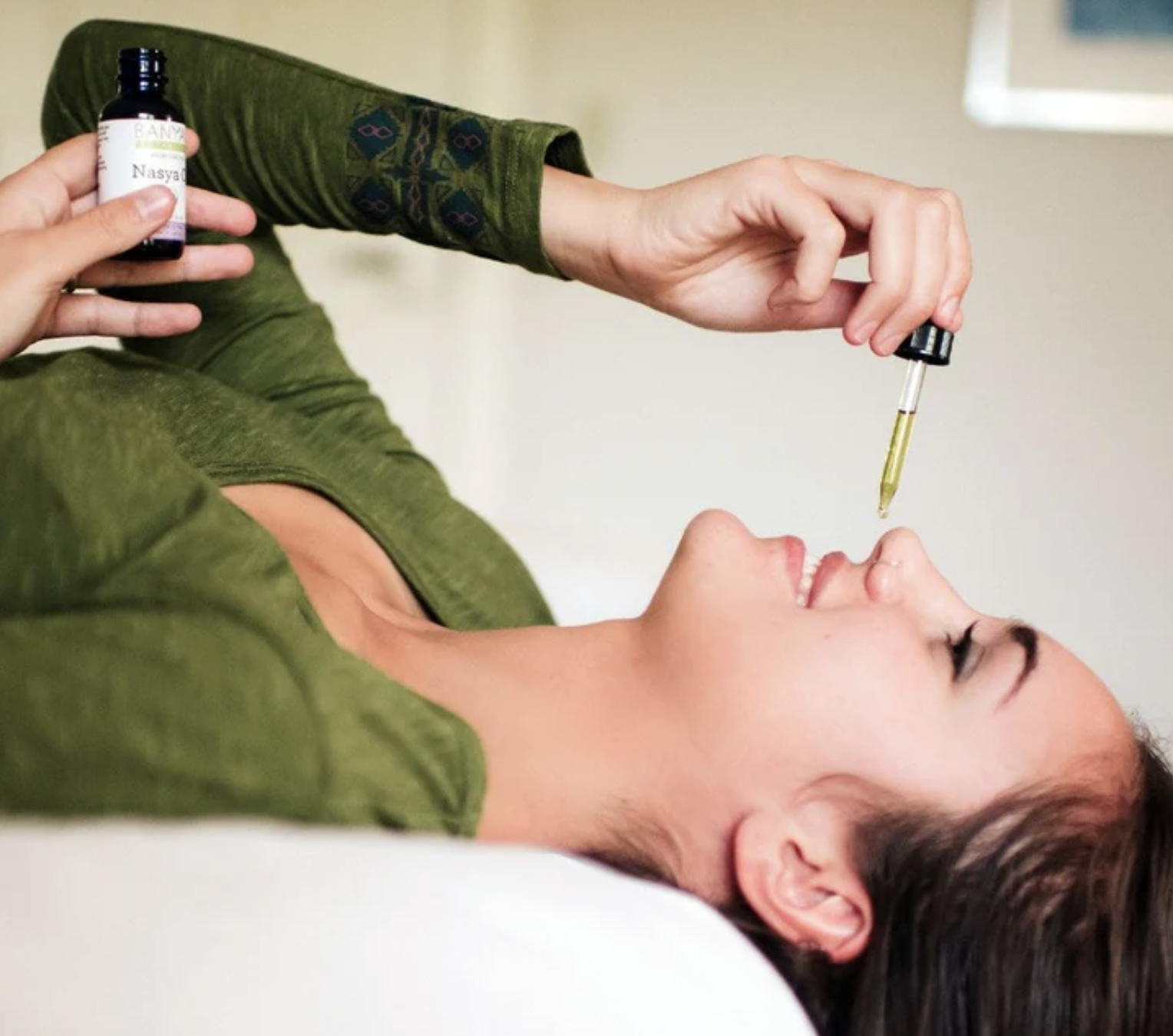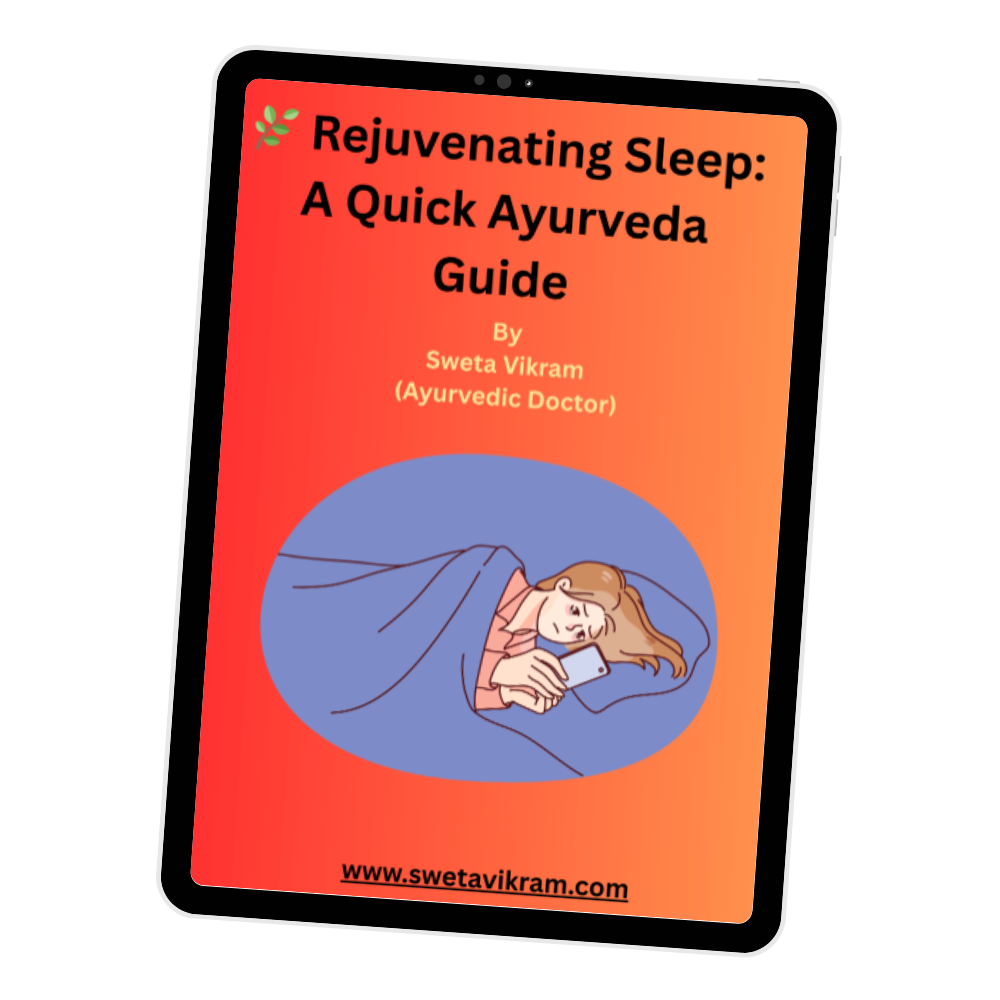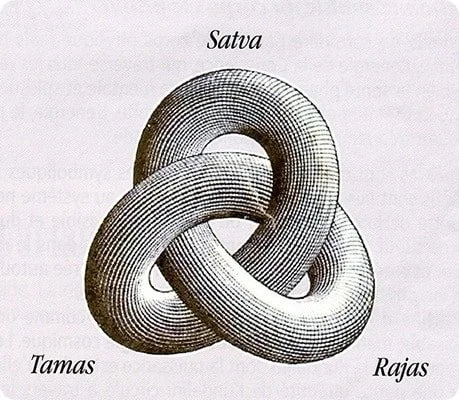Learn Ayurvedic Nasal Therapy: Nasya Oil
Nasya oil therapy involves administering herbal oils, medicines, or powders through the nasal passage. In Ayurvedic texts, the nose is considered the gateway to the head and doorway to consciousness. In fact, Nasya oil is used to treat various conditions affecting the areas above the shoulders. Nasya can be a daily or seasonal practice for maintaining balance in the head, neck, and sinus region.
Dr. Vasant Lad of The Ayurvedic Institute says, “Medications that are administered via the nasal passages affect the mind, prana vata, tarpaka kapha, sadhaka pitta, and majja dhatu.”
Common conditions treated with Nasya:
Headaches and migraines
Sinusitis and nasal congestion
Cervical spondylosis
Memory issues
Eye disorders
Facial paralysis
Sleep disorders
Preventative use during allergy-prone seasons (spring, fall).
How Nasya helps
Clears nasal passages by reducing mucus buildup.
Used for better breathing.
Brings stress relief.
Relieves inflammation and dryness in the nasal tissues.
Improves airflow and support respiratory health.
Addresses underlying causes like seasonal changes or environmental toxins.
Reduces sensitivity to allergens.
Regular practice helps fortify immunity.
Step-by-Step guide to performing Nasya at home
Option 1: If you’re able to lie down!
Lie comfortably on your back, preferably on a firm surface like a bed or a yoga mat.
Place a pillow or rolled towel under your neck to slightly tilt your head backward. This creates an angle that opens the nasal passages, making it easier for the nasya oil to flow into the sinuses.
Tilt your head back with your nostrils opening towards the ceiling.
Your head should be tilted back at an angle of about 30–45 degrees. This position ensures the oil reaches the deeper parts of the nasal cavity and sinuses.
Keep your face and body relaxed. Breathe normally through your mouth if needed.
Place 3 to 5 drops of Nasya Oil in each nostril. With skill, you can administer the oil, drop by drop, circling the inside perimeter of the nostril, thoroughly coating the nasal membranes.
Take a big sniff in, then rest for a few minutes allowing the nasya to penetrate.
After administering the oil, remain in the same position for at least 5–10 minutes to allow the medicine to be absorbed fully.
Do not get up or move abruptly right after the therapy, as this might interfere with the effectiveness of the treatment.
Option 2: If lying down is not convenient!
Take your little finger and place a drop of Nasya Oil on it.
Carefully insert the finger into the nostril.
Now massage the inner walls of the nasal passage gently.
Alternate left and right nostrils.
Do this until each nostril has received a total of three applications of oil.
Precautions and when to avoid Nasya
After heavy meals
During pregnancy
During menstruation
In cases of severe high blood pressure
Immediately after bathing
If the person has acute sinus infections, cold, flu fever, or other infections.
Extremely weak or fatigued individuals
During severe emotional distress
After alcohol or substance use
If contraindicated for specific dosha imbalances
In general, an Ayurvedic practitioner should evaluate whether nasya oil therapy/treatment is suitable for the individual’s specific dosha imbalance.
By following these guidelines and consulting an experienced Ayurvedic practitioner, the benefits of Nasya therapy can be maximized while minimizing potential risks.
If you’d like to learn more about Ayurvedic practices for health, or want to learn more about Nasya book a FREE Discovery Call!
Disclaimer: The content is purely informative and educational in nature and should not be construed as medical advice. The information is not intended for use in the diagnosis, treatment, cure, or prevention of any disease. Please use the content only in consultation with an appropriate certified medical or healthcare professional. If you are looking for advice from a trained yogi and ayurvedic coach, contact me here.










